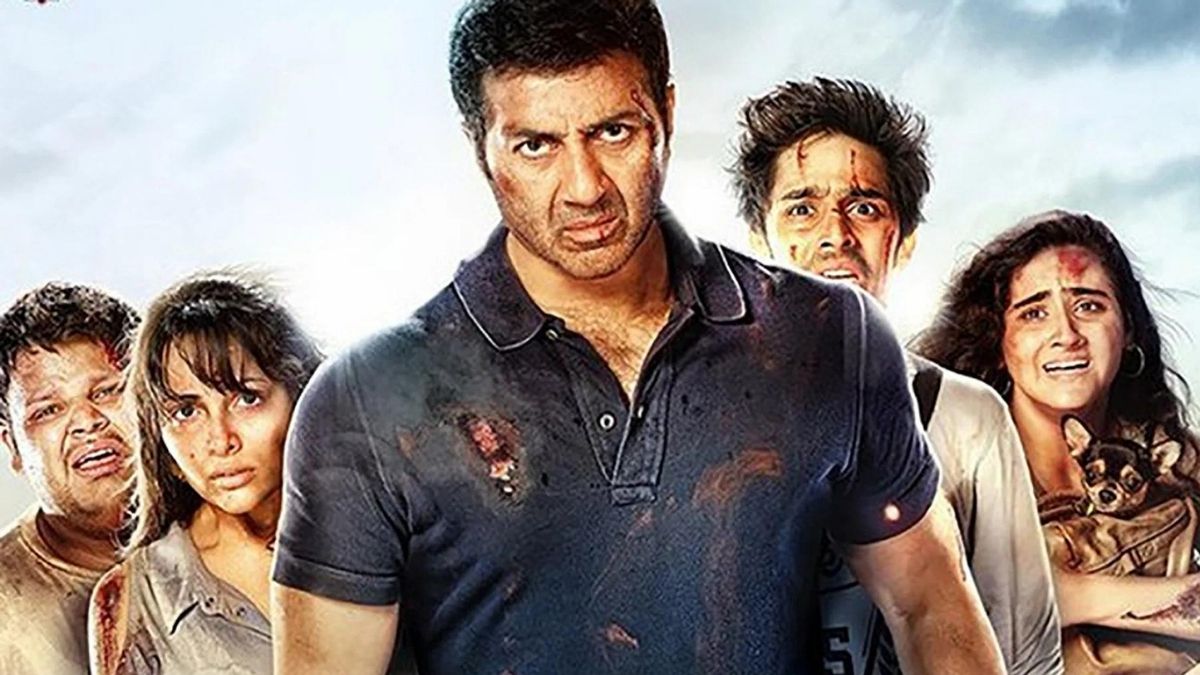
A much upgraded ‘90s nostalgia…
Ghayal Once Again
Director: Sunny Deol
Actors: Sunny Deol, Narendra Jha
Rating: **
“Bhagwan Ajay Mehra ko lambi umar de.” May Ajay Mehra live long, so he can save more women. “Kaash Ajay Mehra Dilli mein hota.” Wish he lived in Delhi to protect the women… “Incriminating evidence?” “Koi Ajay Mehra ko nahin batayega, koi nahin!” Don’t reveal to Ajay Mehra, he’ll expose them, and get us into trouble.
By now you would know the Ajay Mehra I’m referring to is this film’s hero, or rather super-hero. But here’s the thing about super-heroes. They usually have an alter ego. Who for some reason is often a journalist—as is Peter Parker (Spiderman’s human self), who works for the Daily Bugle; or Clark Kent (Superman’s normal side), who’s employed with the Daily Planet…
Ajay Mehra, on the other hand, in his naturally faulaadi avatar, is a full-time crusading, investigative journalist out to save the world, or at least the women. What kind of journalism does he practice? One doesn’t know. Actually you do know, since this film stars Sunny Deol, and obviously one can’t expect him to be sitting in a cubicle transcribing interviews, using his fingers to dance on the keyboard. That would be a monumental waste.
Ajay runs a newspaper. But he’s the one who makes the national news on all news stations—strutting around with a group of activists, barging into a businessman’s office, abducting, and then perhaps releasing him, once he’s admitted to having raped a cop’s daughter, no less.
That’s still low-key stuff, of course. The stakes are much, much higher I assure you. At a time when Indian news media is shrouded under controversies over corporate ownership issues, Ajay does something that even Arnab will ideally shy away from.
Full-frontal, he takes on Reliance’s Mukesh Ambani—almost literally. The villain in this film with tremendous political, media and bureaucratic clout, by virtue of his business interests, is called Bansal. He lives in a Mumbai mansion that is unmistakably ‘Antilla’.
Second-generation scion Bansal (Narendra Jha, fine performer) with an old mother, has a heavily pampered son, who’s studied abroad, has anger management issues, and has killed an RTI activist. Some kids have video evidence of this. They need to get to Ajay. That’s the one line story of a film that is wholly built around one long chase sequence, set between trains, malls, and streets.
And ‘Antilla’. If there were any doubts in the audience’s mind, Bansal Sr even unrelatedly refers to a car accident. The video on a hard-drive is hidden in the Reliance store. And I just realised, this film has been released by Anil Ambani’s Reliance Entertainment. What’s going on?
Much, clearly. To start with, unlike most other films that treat sequels as brand franchise, Ghayal Returns is genuinely the second part of Ghayal (1990), where Om Puri’s cop character is now an RTI activist. The hero, who’s lost his whole family, himself sees images from his life from two and half decades ago, when he took on ‘Balwant Rai ke kutto!’
That was, yes, absolutely another time. I’m old enough to say I was a kid then, which means it was roughly when Jesus was around. Or it does feel ancient enough. Just to give you a sense of the early ’90s, if you were not born yet, the biggest Indian singer back then used to be one Altaj Raja (‘Hum toh thehre pardesi’) who, according to Wikipedia, scored the music for Ghayal, which is not true. Bappi, the king of bling, did; and he reintroduced the French-Brazilian ‘Lambada’ in the soundtrack as a happy family song!
It was also a time when desi popular entertainment appeared quite distant from middle class’ popular tastes, much like politics seems so disconnected from our major concerns currently.
Clearly aware of these changes, Sunny Deol, as writer-director, centres his script on two things that immediately separate his story-line from anything in the ‘90s—technology, and television news media. But mainly mobile technology, tracking devices, CCTV cameras etc. that automatically make this film a much upgraded version of any Sunny Deol movie you’ve ever seen.
It still remains very much his picture. Because you can take Sunny Paaji out of the ‘90s, but you can’t take the ‘90s out of him, can you. Or should you? Even at 59, for whatever atta, ‘peesing’ from whichever chakki, that he eats, you know exactly what you want when you walk into his film.
There, right at the end, a bunch of firangi bodyguards ask Sunny Paaji to drop his guns. He drops his guns. And then the guards who are fully loaded with weapons tell him: Now we will fight you with our hands. Well that’s the moment that wins this movie really!
Mayank Shekhar’s book NAME PLACE ANIMAL THING, non-fiction on desis and pop-culture, is available online and at leading bookstores
